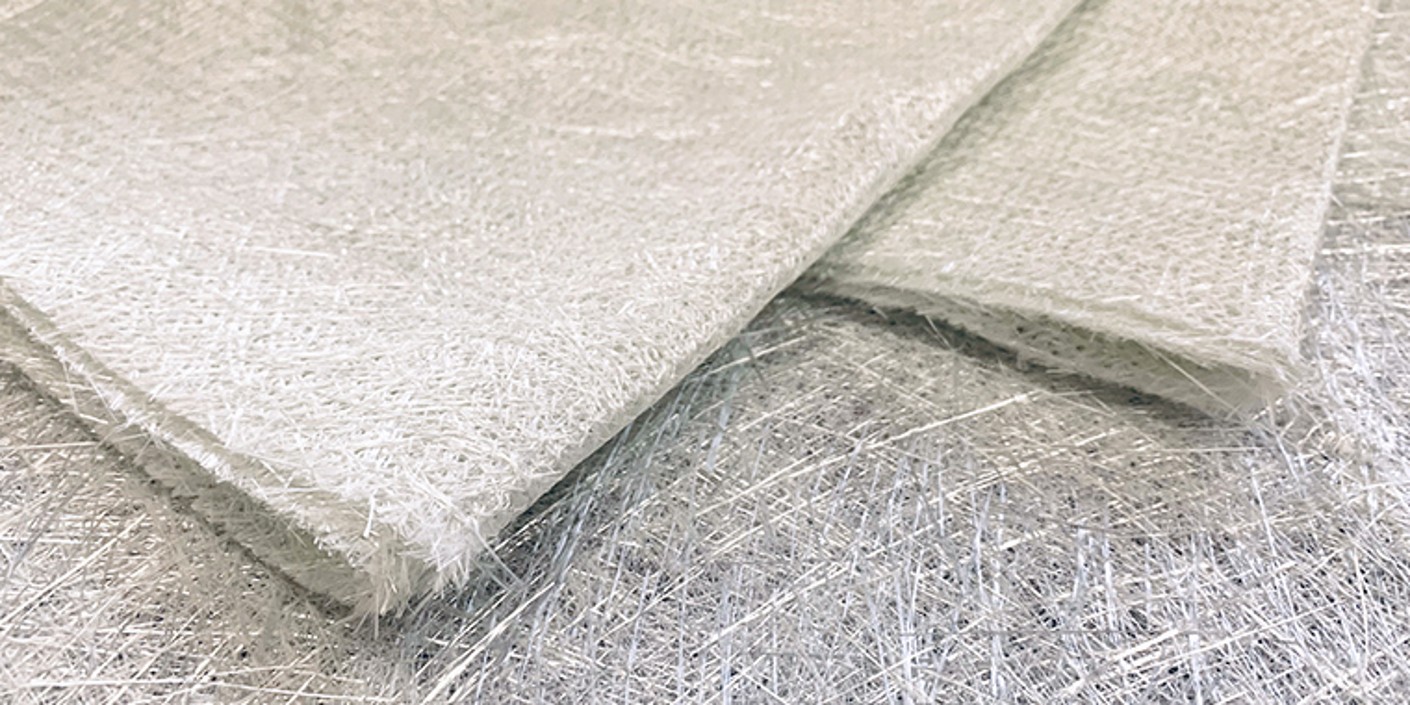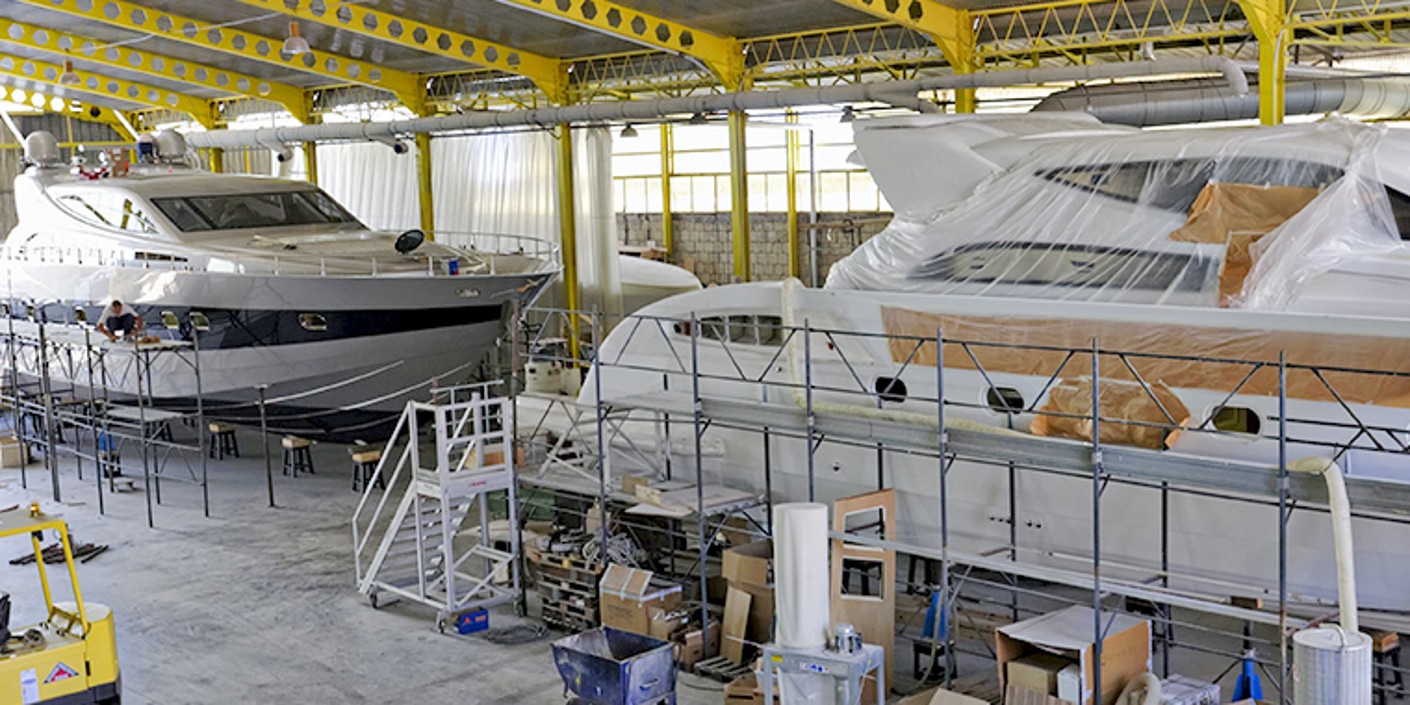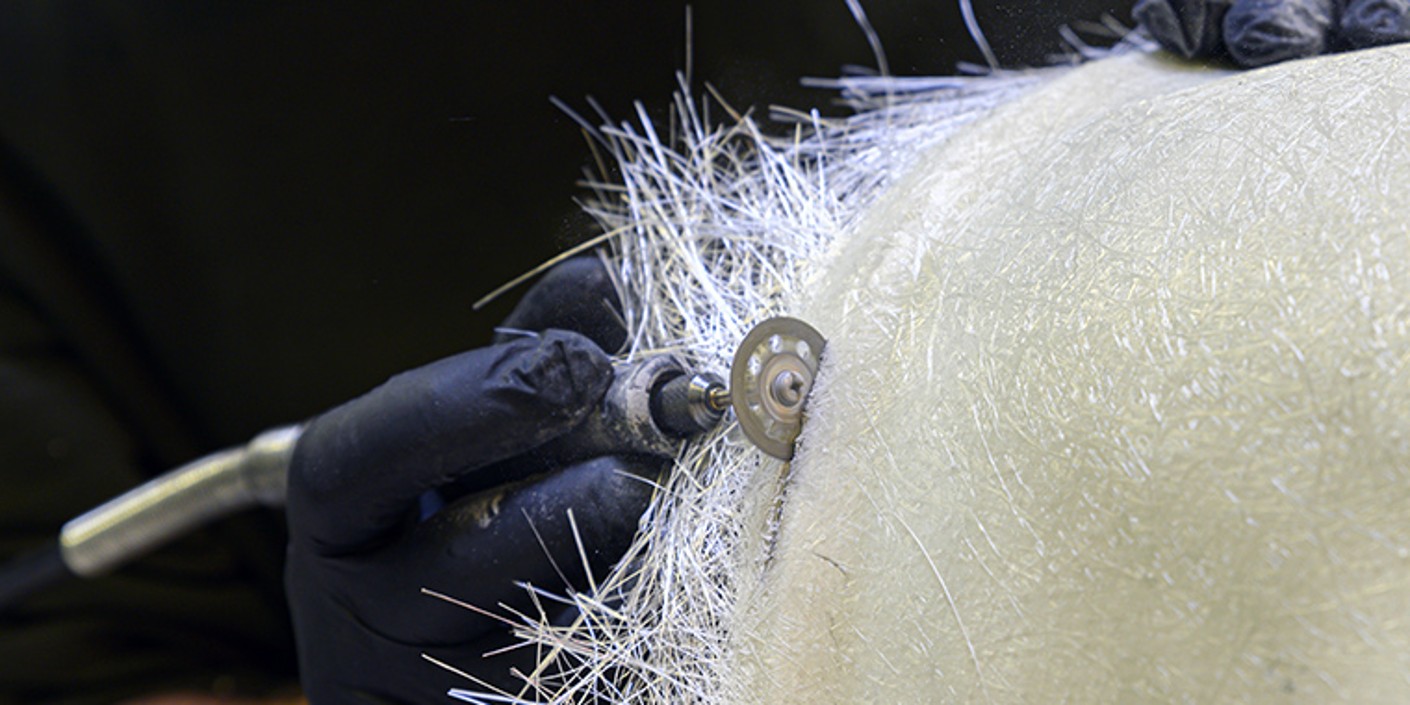Fe, fi, fo, fibre
Composite materials like GRP (glass fibre reinforced plastic) and CRP (carbon fibre reinforced plastic) are relatively young in terms of their appearance on the engineering and industrial design stage. Both can be more precisely formed than metals, making them popular alternatives to stainless steel and co. Both polymers are also very light but still very durable. Read on to find out why GRP and CRP require special tools for cutting and grinding and to learn more about the phenomenon of fraying. We’ll also be telling you why dust produced when machining fibre reinforced plastics is actually a highly sought waste product and how to remove soiling from CRP and GRP.

GRP and CRP – come into their own in small-lot and prototyping
Glass and carbon fibre reinforced plastics number among the semi-finished products and are refined using a variety of production methods such as fibre spraying, lamination by hand or what is referred to as resin transfer moulding (RTM for short). The resin coating protects the fibres from external influence and safeguard component shape. Unlike metals which, after procedures such as deep drawing for example, requires almost no further machining, both CRP and GRP require a lot of subsequent work. Although we're generalising a fair deal here, it remains safe to say that fibre reinforced plastics are more cost-efficient in small-lot production or when manufacturing a single component, while using metal is cheaper for mass production.

Streamlined – plastic does its job in and out of the water
GRP especially is most commonly seen in boat design. Engineers just love its excellent mouldability for lightweight boat design in all its forms. Tailored laminate, custom-built hulls or even masts and other on-deck features – in a field like boat construction, where weight and strength both count equally, GRP and CRP have become indispensable. As a master craftsman in mechanical and plant engineering, you’re bound to be aware of the benefits both polymers’ good plasticity affords. When it comes to custom solutions for enclosures in particular, GRP and CRP present themselves at their most shapely.
In aerospace design, engineers are always after greater strength and rigidity. CRP is the most popular choice here, as it allows designs to be really lightweight and thus more energy-efficient. A property that wind power plant designers also appreciate, by the way. Because anything that's lightweight also takes less energy to move, the automotive industry is using CRP components to fulfil more and more roles.

You won’t get away without subsequent machining
Fibre reinforced plastics pose quite a challenge. Why? Because the material is not homogeneous and because the fibres and the matrix have vastly differing properties. Furthermore, the fibres are highly abrasive – your tools will wear down fast. Being polymers, both materials possess poor thermal conductivity. This means you need to pay close attention to heat dissipation when machining them, ideally using cooling of some kind. It's the only way to avoid adverse effects, for example thermal expansion or high clamping pressures.
Machining GRP and CRP creates particular hazards in the form of particle dust from cutting and grinding the polymers, especially when machining manually instead of in an enclosed machine. Besides increasing the risk of explosion and fire, you’ll also need to wear personal protective equipment, including an appropriate facemask, to avoid inhaling the dust at all cost. Good protective equipment also protects your skin from exposure to GRP/CRP.

Cutting fibre reinforced plastics – end of lifecycle
If you need to saw fibre reinforced plastics, first delaminate the cutting surface. Take any special material properties into account, too. Make sure you have sufficient cooling. The tool of choice depends on your desired result. If you simply want to separate the two materials, for example for disposal, a saw will do the job. If contour cuts and detailed work are called for, you’ll usually need diamond tools for making those precise cuts.
CRP and GRP both tend to fray – you’ll need to choose your tools carefully. Get advice from experts if you’re unsure.

Hardly a chip – grinding down
When manufacturing components from fibre reinforced plastics, they are usually made as close to their final shape as possible. In terms of machining processes that produce chips, like grinding down for example, the chip volume tends to be pretty low. In most cases, CRP and GRP are only deburred, side-milled, drilled or given cut-outs. When it comes to pressure and speed during machining,
- CRP and GRP don't take well to too much, as the polymers may start to melt. When machining – whether deburring, grinding down or rough pre-cleaning – keep speeds low and contact pressure in the medium range. Before beginning, check carefully what kinds of plastic are in use. Thermoplastics respond differently from duroplastics. In both cases, the fibre reinforced plastic is highly abrasive – rapid wear on grinding and cutting tools is typical.
- Make sure to use high-quality tools, and use diamond tools where you can (galvanically bonded or with PCD). Their large flutes make machining fibre reinforced polymers easier, as do burr carbides with special geometries.
- Taking a look at tools for machining aluminium can be worth it. Just like aluminium, CRP and GRP have a tendency to smear. This makes open-pore grinding tools, tools with abrasive coatings and rapid-cutting SiC grit good choices for clean machining of composites, too.
- Always remember to wear your personal protective equipment – the polymer particles are a health hazard for yourself and your fellow workers.

Dreaming of the future – welding CRP and GRP
Unlike metals, fibre reinforced plastics cannot simply be welded using conventional techniques. While laser-based methods of joining composite materials are on the rise, they currently remain limited to research applications. Present established industrial methods include flush-fitting joining or material bonding. Overall, fibre reinforced materials are glued, riveted or bolted together.

Dust – a polishing by-product you might be able to reuse
Polishing usually describes very fine grinding which requires using tools and grinding media that will seal even the minutest of pores in a GRP or CRP surface. In doing so, a certain volume of the removed material vaporises, while the rest of it fills in pores and score lines in the fibre reinforced plastic’s surface. The surface can then be sealed further using wax.

How soiled is it? Cleaning CRP and GRP
Your practical experience has taught you – fibre reinforced plastics make it especially difficult to draw the line between cleaning agent, care product or polish. Some aids grind in order to remove dirt, others grind less and rather act to seal the surface. Care treatments for GRP and CRP capriciously criss-cross the boundaries between cleaning, polishing and sealing. Depending on the component and the fibre, the tools and grinding media used will differ widely, each with their own particular contact pressure and spin speed.


 To the consultation
To the consultation